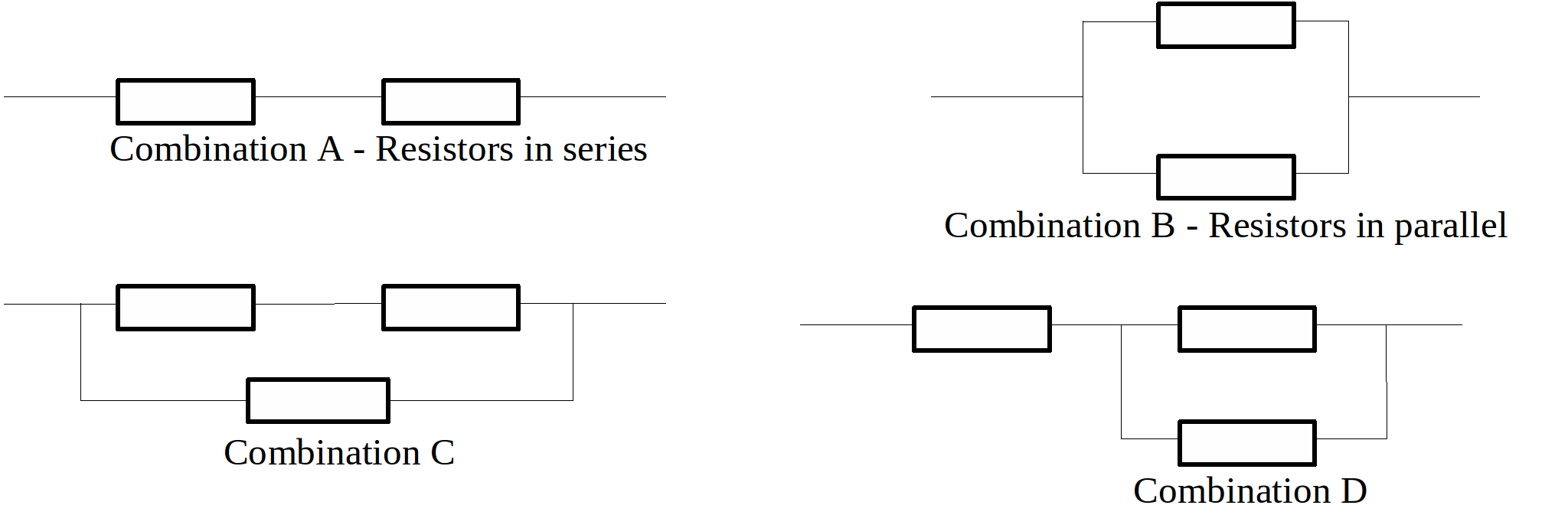Apparatus:
5 mounted resistors labelled A, B, C, D & E, multimeter set to measure resistance, wires.
Circuit diagrams:

Procedure :
In all cases below record your measurements & calculations clearly
1. Use the multimeter to measure the resistances of the five resistors A, B, C, D, & E.
2. According to the manufacturer the values of your resistances are:
A = 1.2kΩ; B = 1.8kΩ; C = 2.7kΩ; D = 2.7kΩ; E = 5.6kΩ all with a tolerance of = ±5%.
3. Show whether or not your measured values for each resistor are within the tolerance given by the manufacturer.
For example:
resistor A's possible range of values should be ± 5% of 1.2kΩ, that is between 1.2kΩ - 5% = 1.20 - 0.06 = 1.14kΩ and 1.2kΩ + 5% = 1.20 + 0.06 = 1.26kΩ
4. Select the two resistors that will give the maximum possible total resistance when used in combination A.
5. Calculate the total resistance you would expect to obtain using the manufacturer's values for these resistors.
6. Using the 5% tolerance calculations from stage 3 calculate the range of possible resistance for your combination.
For example:
If you choose resistors A & C (an incorrect choice) you would expect from the manufacturer's markings a total resistance of 1.2kΩ + 2.7kΩ = 3.9kΩ.
If both are 5% too high then the total will be: 1.26kΩ + 2.85kΩ = 4.11kΩ
If both are 5% too low then the total will be: 1.14kΩ + 1.55kΩ = 3.69kΩ
Therefore the range of possible resistance will be 3.69kΩ to 4.11kΩ.
7. Use the multimeter to measure the actual total resistance. Comment on your findings.
8. Repeat stages 4 to 7 for the other three combinations. Note: For resistors in parallel![]() etc...
etc...
9. If you have time, repeat stages 4 to 8 but this time for the minimum total resistance for each combination.
